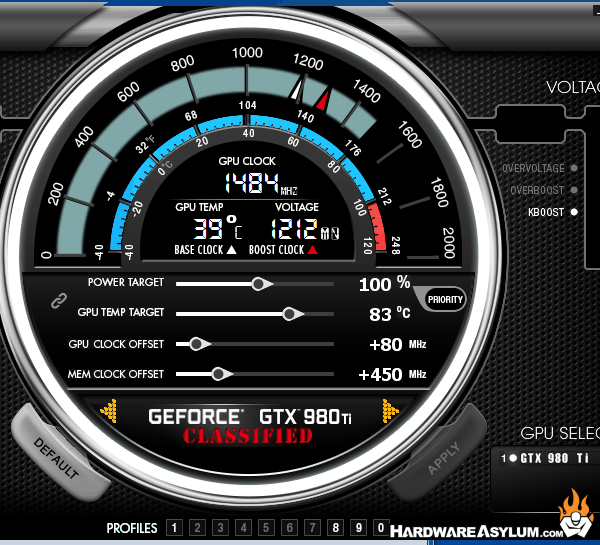EVGA GTX 980 Ti Classified Video Card Review
Author: Dennis GarciaOverclocking
As we alluded to earlier in this review there are two reasons to buy an EVGA Classified video card and arguably the most important of them is overclocking. The larger VRM is the driving factor behind this decision as it will increase stability and power delivery to the GPU and allow for higher overclocks. Without it there is a chance you can quickly overpower the circuits and basically burn up the card. That is, assuming OCP doesn't kick in and you are below the power target.
Overclocking the Maxwell is a little different from legacy generation GPUs since you must contend with a non-adjustable Boost Clock. NVidia Boost 2.0 is a form of dynamic overclocking that is determined either by GPU temperature or a predetermined power target. Assuming your GPU is below the programmed temperature the clock speed will scale until it consumes enough power to trip the power target. For these tests we first set out using the stock BIOS and quickly discovered that the card would max out at around 1485Mhz. Voltage adjustments were ineffective using both the stock BIOS images and the special LN2 extreme BIOS images.
As it would turn out the GTX 980 Ti doesn’t appear to scale with voltage but does respond well to temperature. This was evident when letting the card rest and then setting frequency before running a benchmark. Doing this we got the card up to 1508Mhz at which point the driver crashed shortly after. It might be time to break out the LN2 again.


After some tweaking and tuning we settled on an overclock of 1485Mhz Core and 1978Mhz Memory. (+80 / +450 respectively). To enable this overclock the power target was increased to 125%. No voltage was required and we left the fan profiles on auto.



This is by far one of the best video cards we have ever used especially given the performance results from simply increasing the clock speeds. Overall we are extremely pleased with our results and yet, sad.
It should be noted that while 1485Mhz seems impressive our card would actually Boost to 1400Mhz without any intervention. Given that this is extremely close to the chip maximum we can call the out of box performance a success. Most of the gains we see here are from increasing the memory clock.
Keep in mind that overclocking is not guaranteed so your results may vary.

